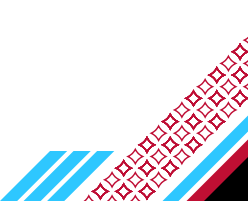Faculty and Staff
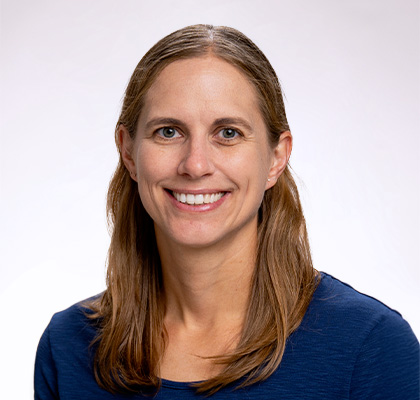
Stacey Stoffregen
Department Chair, Professor
Office: 261 Centennial Science Hall
Phone: 715-425-4510
Email: stacey.stoffregen@uwrf.edu
Professional Information
Education:
- Ph.D., Chemistry with Biomolecular Science Specialization, 2007, Iowa State University
- Advisers: William S. Jenks and Nenad M. Kostić
- B.A., American Chemical Society-Certified, 2002, St. Olaf College
- Research Adviser: Jeffrey N. Dahlseid
Courses Taught:
- CHEM 120L: General Chemistry I Laboratory
- CHEM 121L: General Chemistry I Laboratory
- CHEM 130: Introduction to Organic Chemistry Laboratory
- CHEM 230: Survey of Organic Chemistry
- CHEM 231: Organic Chemistry I
- CHEM 232: Organic Chemistry II
- CHEM 236: Organic Chemistry I Laboratory
- CHEM 237: Organic Chemistry II Laboratory
- CHEM 333: Organic Synthesis
- CHEM 334: Organic Synthesis Laboratory
- CHEM 380: Junior Seminar
- CHEM 389: Special Topics-Green Chemistry
- CHEM 389: Special Topics-Spectroscopic Identification of Organic Compounds
- CHEM 480: Chemistry Seminar
- CHEM 432: Advanced Organic Chemistry
Research Interests:
- Modeling the atmospheric degradation of organic compounds
- Developing green undergraduate laboratory experiments
Publications:
- O’Reilly, M. C.; Stoffregen, S. A.; Peterson, K. P.; Maddox III, M. P.; Schrank, C. Discovery-Based Bromination of Alcohols: An Organic Chemistry Experiment Supporting Spectroscopic Analysis and Mechanistic Reasoning, J. Chem. Educ. 2021, 98, 3326-3332.
- Schuster, M. L.; Peterson, K. P.; Stoffregen, S. A. Isobutylene Dimerization: A Discovery-Based Exploration of Mechanism and Regioselectivity by NMR Spectroscopy and Molecular Modeling. J. Chem. Educ. 2018, 95 (6), 1040-1044.
- Stoffregen, S. A.; Lee, S. Y.; Dickerson, P.; Jenks, W. S. Computational Investigation of the Photochemical Deoxygenation of Thiophene-S-oxide and Selenophene-Se-oxide. Photochem. Photobiol. Sci., 2014, 13, 431-438.
- Jenks, W. S; Heying, M. J.; Stoffregen, S. A.; Rockafellow, E. M. Reaction of Dicarbomethoxycarbene with Thiophene Derivatives. The Journal of Organic Chemistry, 2009, 74, 2765-2770.
- Stoffregen, S. A.; Heying, M.; Jenks, W. S. S,C-sulfonium ylides from thiophenes: Potential carbene precursors. Journal of the American Chemical Society, 2007, 129, 15746-15747
Dustin Andert
Laboratory Manager
Start Year: 2006
Office: 260 Centennial Science Hall
Phone: 715-425-4016
Email: dustin.andert@uwrf.edu
Professional Information
Education:
- B.A., University of St. Thomas
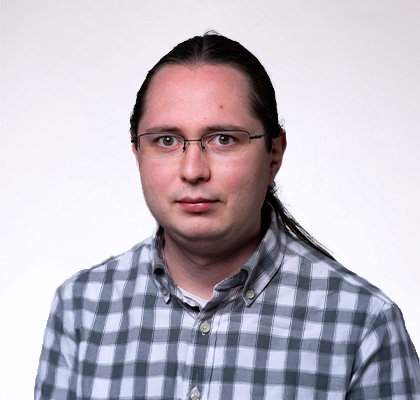
Samuel Alvarado
Professor
Office: 259 Centennial Science Hall
Phone: 715-425-3871
Email: samuel.alvarado@uwrf.edu
Professional Information
Education:
- B.A., Augustana College (IL), 2010
- Ph.D., Iowa State University, 2015
Courses Taught:
- CHEM 121: General Chemistry Lecture and Lab
- CHEM 322 and CHEM 325: Inorganic Chemistry Lecture and Lab
Research Interests:
Quantum dots are semiconductor particles with diameters between 1-100 nanometers. These particles are larger than small molecules, but smaller than bulk semiconductors (which can still micrometer-sized). The smallest range of quantum dot sizes includes “magic sized” nanoclusters, which have known chemical formulas such as Cd13Se13 and Zn34S34. Quantum dots act as tunable light absorbers and emitters – by changing the size of a quantum dot, it can be made to emit colors of light ranging from red to blue.
Example elemental compositions of quantum dots include CdS, CdSe, or InP. These materials can be tuned to luminesce and absorb light across the visible spectrum, which has made them useful in consumer electronics like televisions. However, some of these materials are relatively toxic or are uncommon in the Earth’s crust.
My research focuses on understanding the chemistry of magic sized quantum dots. Topics include:
- Developing luminescent materials by introducing small amounts of transition metal ions into magic sized ZnS quantum dots.
- Studying the electronic structure of transition metal-doped ZnS quantum dots by experimental methods and computational modeling.
- Investigating the chemical reactions of magic sized ZnS quantum dots in solution.
Publications:
- Bhattacharjee, U.; Long, M.; Rosales, B. A.; Alvarado, S. R.; Vela, J.; Petrich, J. W. “Using ATTO Dyes to Probe the Photocatalytic Activity of Au-CdS Nanoparticles.” J. Phys. Chem. C, 2017, 121, 676–683.
- Alvarado, S. R.; Shortt, I.; Fan, H.-J.; Vela, J. “Assessing Phosphine-Chalcogen Bond Energetics from Calculations.” Organometallics, 2015, 34, 4023–4031. DOI: 10.1021/acs.organomet.5b00428
- Alvarado, S. R.; Guo, Y.; Ruberu, T. P. A.; Tavasoli, E.; Vela, J. “Inorganic Chemistry Solutions to Colloidal Semiconductor Problems.” Coord. Chem. Rev., 2014, 263, 182–196. DOI: 10.1016/j.ccr.2013.09.001
- Humphries, M. E.; Pecak, W. E.; Hohenboken, S. A.; Alvarado, S. R.; Swenson, D. C.; Domski, G. J. “Ruthenium(II) supported by phosphine-functionalized N-heterocyclic carbene ligands as catalysts for the transfer hydrogenation of ketones.” Inorg. Chem. Commun., 2013, 37, 138–143. DOI: 10.1016/j.inoche.2013.09.046
- Guo, Y.; Alvarado, S. R.; Barclay, J. D.; Vela, J. “Shape-Programmed Nanofabrication: Understanding the Reactivity of Dichalcogenide Precursors.” ACS Nano, 2013, 7, 3616–3626. DOI: 10.1021/nn400596e
- Alvarado, S. R.; Guo, Y.; Ruberu, T. P. A.; Bakac, A.; Vela, J. “Photochemical vs. Thermal Synthesis of Cobalt Oxyhydroxide Nanocrystals.” J. Phys. Chem. C, 2012, 116, 10382–10389. DOI: 10.1021/jp301459s
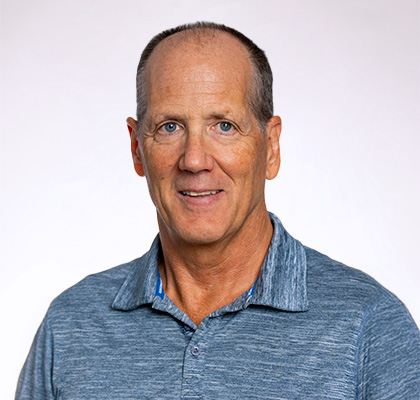
Professional Information
Kelsey Dawson
Instructor
Office: 267 Centennial Science Hall
Phone: 715-425-4741
Email: kelsey.dawson@uwrf.edu
Professional Information
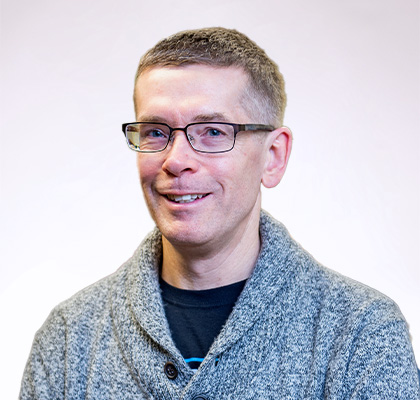
Robert Follensbee
Lecturer
Phone: 715-425-3523
Office: 265 Centennial Science Hall
Email: robert.follensbee@uwrf.edu
Professional Information
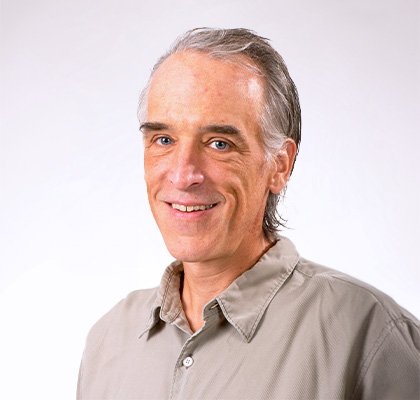
Professional Information
Education:
- B.S., Biochemistry, University of Minnesota (1983-1987)
- Ph.D., Biochemistry, University of Wisconsin (1987-1994) in the lab of Dr. William S. Reznikoff
- Post-doctoral, University of Minnesota (1994-1997) in the lab of Dr. M. David Marks
Courses Taught:
- Biochemistry I
- Biochemistry II
- Biochemistry Lab
- Fundamentals of Biochemistry
- Lab Safety
- General Chemistry Lab
- Organic Chemistry Lab
- First Year Adventure
- Junior Seminar
Research Interests:
My major research interest is in the cellular differentiation and morphogenesis in the model plant Arabidopsis thaliana. As part of my research, I maintain an active research collaboration with Dr. David Marks at the University of Minnesota.
Professional Activities:
- Program Director of the UWRF biotechnology program
Publications:
- Marks MD, Wenger JP, Gilding E, Jilk R, and Dixon, RA. 2009. Transcriptome Analysis of Arabidopsis Wild-Type and gl3-sst sim Trichomes Identifies Four Additional Genes Required for Trichome Development. Molecular Plant. 2: 803-822.
- Jin-Long Qiu, Ross Jilk, M. David Marks , Daniel B. Szymanski. 2002. The Arabidopsis SPIKE 1 Gene Is Required For Normal Cell Shape Control and Tissue Development. Plant Cell.
- Szymanski, Daniel B., Jilk, R.A., Pollack, S.M., and M David Marks. 1998. Control of GL2 Expression In Arabidopsis Leaves and Trichomes. Development.125: 1161-1171
- Jilk, R.A. and W.S. Reznikoff. 1996. The Organization of the Outside End of Transposon Tn5. J. Bact.178:1671-1679
- Reznikoff, W.S., R.A. Jilk, M.P. Krebs, J.C. Makris, P.L. Nordmann, M. Weinreich, and T. Weigand. 1993. Tn5lacZ Translational Fusion Element: Isolation and Analysis of Transposition Mutants. Meth. Enzymol.217: 312-322
- Jilk, R.A., J.C. Makris, L. Borchardt, and W.S. Reznikoff. 1993. Implications of Tn5 Associated Adjacent Deletions. J. Bact. 175: 1264-1271
Teaching:
- The University of Minnesota - Instructor (1996-1997)
- Augsburg College - Visiting Professor (1997-1998)
- Rockhurst University - Assistant Professor (1998-2002)
- University of Wisconsin-River Falls - Assistant Professor (2002-present)
Additional Information:
- 2018-2019 Scholar in Wisconsin Teaching Fellows/Scholars program
- 2016 Sabbatical leave recipient to pursue research collaboration on Pennycress glucosinolates
- 2008 National Science Foundation - Course, Curriculum, and Laboratory Improvement Grant recipient
Yuliya Paukku
Lecturer
Office: 217 Centennial Science Hall
Phone: 715-425-4842
Email: yuliya.paukku@uwrf.edu
Professional Information
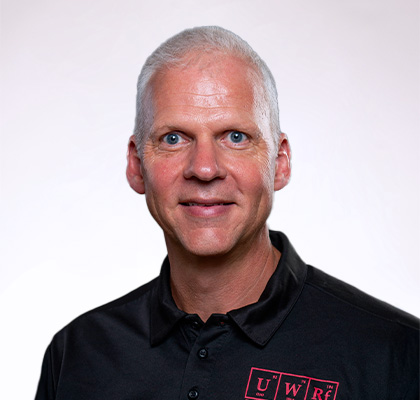
Karl Peterson
Professor; Dean, College of Arts and Sciences
Office: 136f Kleinpell Fine Arts
Phone: 715-425-4515
Email: karl.peterson@uwrf.edu
Professional Information
Education:
- Ph.D., Organic Chemistry, 1997, Iowa State University
- Thesis: Palladium(II)-Catalyzed Organic Transformations Employing Oxygen Gas as the Stoichiometric Reoxidant
- Adviser: Professor Richard C. Larock
- B.S., Chemistry, 1992, University of Wisconsin-La Crosse
Courses Taught:
- CHEM 111 & CHEM 116: General Chemistry I
- CHEM 112 & CHEM 117: General Chemistry II
- CHEM 130 lab: Introduction to Organic Chemistry
- CHEM 231 and 232: Introductory Organic Chemistry I and II
- CHEM 231h and 232/233h: Organic Chemistry Honors Session
- CHEM 233 lab: Foundations of Organic Chemistry
- CHEM 236 and 237: Introductory Organic Chemistry Laboratory I and II
- CHEM 333/334: Organic Synthesis
- CHEM 480: Chemical Communications and Research
Research Interests:
- Natural product organic synthesis
- Synthetic methodology development
- Undergraduate laboratory experiments
Publications:
- "Isobutylene Dimerization Repackaged as a Problem-Based Exercise" Mariah L. Schuster, Karl P. Peterson, Stacey A. Stoffregen manuscript submitted to the Journal of Chemical Education
- “Zebrafish Heart Failure Models for the Evaluation of Chemical Probes and Drugs”, Hunag, Cheng-Chen; Monte, Aaron; Cook, James; Kabir, Mohd Shahjahan; Peterson, Karl P. Assay & Drug Development Technologies 2013, 11(9/10), 561.
- “Determination of the Hammett Equation Rho Constant for the Hydrolysis of p-Nitrophenyl Benzoate Esters” J. Chem. Educ. 2008, 85(4), 558-560.
- “The Palladium-Catalyzed Oxidation of Allylic and Benzylic Alcohols” J. Org. Chem. 1998, 63, 3185-89 Karl P. Peterson and Richard C. Larock.
- “Palladium(II)-Catalyzed Cyclization of Olefinic Tosylamides” J. Org. Chem. 1996, 61, 3584. Richard C. Larock, Timothy R. Hightower, Lisa A. Hasvold and Karl P. Peterson
- “Using computational chemistry to complement technique and preparative exercises throughout the organic chemistry laboratory” by Karl P. Peterson and Stacey Stoffregen. Oral presentation at the 245th National Meeting of the American Chemical Society, April 7-11, 2013 in New Orleans, LA.
- “Simple continuously extracting steam distillation apparatus for the organic laboratory” by Karl P. Peterson and Ross Jilk. Poster presentation at the 245th National Meeting of the American Chemical Society, April 7-11, 2013 in New Orleans, LA.
- “Design and Implementation of an Introductory Organic First Chemistry Curriculum” by M. Kahlow, R. Jilk, D. Marchand, B. Nielsen, K Peterson, M. Pala, J. Rosenthal, D. Rusterholz, J. Schneider, and S. Stoffregen. Poster presentation at the NSF CCLI/TUES PI conferences, January 2013.
- “The University of Wisconsin – River Falls Organic First Curriculum” David B. Rusterholz, Ross Jilk, Michael Kahlow, Daniel Marchand, Barbara Nielsen, Karl Peterson, Magdalena Pala, Jeff Rosenthal, Jamie Schneider, and Stacey Stoffregen, CHED#457 American Chemical Society 244th National Meeting, Philadelphia, PA, August 19-23, 2012.
- “Filling the Gaps in an Organic First Introductory Curriculum with a Fifth Course in Organic Synthesis” by M. Kahlow, R. Jilk, D. Marchand, B. Nielsen, K Peterson, M. Pala, J. Rosenthal, D. Rusterholz, J. Schneider, and S. Stoffregen. Oral presentation at the 22nd Biennial Conference on Chemical Education at Pennsylvania State University. July 2012
- "Teaching Organic first: Implementing an Organic first laboratory course" Ross Jilk, Karl P. Peterson. Poster presentation at the BCCE 2010. Denton, TX.
- "Teaching organic first: Assessing curricular change" Ross Jilk, Michael Kahlow, David B. Rusterholz, Barb Nielsen, Magdalena Pala, Karl Peterson, Jeff Rosenthal, Jamie L. Schneider, Cory Windorff. Poster presentation at the BCCE 2010. Denton, TX.
- "Incorporating computational chemistry exercises throughout the organic laboratory curriculum: From understanding molecular geometry to rationalizing observed reactivity" Stacey Stoffregen and Karl P. Peterson. Oral presentation at the BCCE 2010. Denton, TX.
- "Teaching organic first: A natural extension to atoms first" Ross Jilk, Michael Kahlow, David B. Rusterholz, Barb Nielsen, Magdalena Pala, Karl Peterson, Jeff Rosenthal, Jamie L. Schneider. Oral presentation at the BCCE 2010. Denton, TX.
- “Isobutylene Dimerization Repackaged as a Problem-Based Exercise” Karl P. Peterson and Stacey A. Stoffregen. Poster presentation at the 2009 Midwest Regional Meeting of the American Chemical Society. October 21-23, 2009. Iowa City, IA.
- “Implementing and Assessing an Organic First Curriculum” Ross Jilk, Michael Kahlow, David B. Rusterholz, Barb Nielsen, Magdalena Pala, Karl P. Peterson, Jeff Rosenthal and Jamie Schneider. Poster presentation by at the 2009 UW-System Chemistry Faculty Meeting. October 16, 2009. Racine, WI.
- “1H NMR Identification of Commercial Cooking Oils in the Organic Laboratory” Karl P. Peterson, Ross Jilk, and Tara A. Ladlie. Poster presentation at the 2009 Great Lakes Regional Meeting of the American Chemical Society. May 13-16, 2009. Lincolnshire, IL.
- “Developing and Implementing an Organic First Curriculum” Ross Jilk, Michael Kahlow, David B. Rusterholz, Barb Nielsen, Magdalena Pala, Karl P. Peterson, Jeff Rosenthal and Jamie Schneider. Poster presentation at the 2009 Great Lakes Regional Meeting of the American Chemical Society. May 13-16, 2009. Lincolnshire, IL.
- “Confirmation of Conformation: Molecular Modeling Meets Experiment in the Organic Chemistry Laboratory” Karl P. Peterson. Oral presentation at the National Meeting of the American Chemical Society. August 17-21, 2008. Philadelphia, PA.
- “Toward the Synthesis of (-)-Incarvilline and (-)-Incarvillateine” Karl P. Peterson. Poster presentation at the 2006 Great Lakes Regional Meeting of the American Chemical Society in Milwaukee, WI, May 31-June 2.
- “Enantioselective Palladium(II)-Catalyzed Organic Transformations: An Opportunity for Undergraduate Research at UW-River Falls”, UW-River Falls Seminar Series, S’01
- “The Palladium-Catalyzed Oxidation of Allylic and Benzylic Alcohols” J. Org. Chem. 1998, 63, 3185-89 Karl P. Peterson and Richard C. Larock.
- “Palladium(II)-Catalyzed Oxidation of Allylic and Benzylic Alcohols” Karl P. Peterson and Richard C. Larock. Poster presentation for Pacifichem Conference, Dec. 17-22, 1995, Honolulu, Hawaii
Moumita Ray
Instructor
Office: 223 Centennial Science Hall
Phone: 715-425-3523
Email: moumita.ray@uwrf.edu
Professional Information
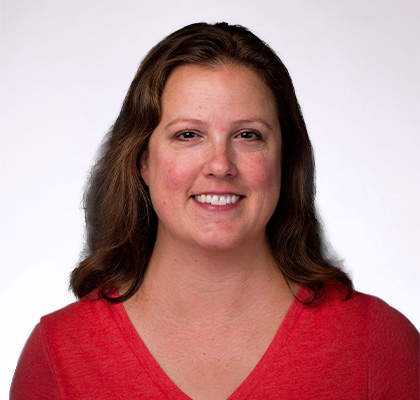
Jamie Schneider
Professor; Assistant Dean, College of Arts and Sciences
Office: 257 Centennial Science Hall
Phone: 715-425-4590
Email: jamie.schneider@uwrf.edu
Professional Information
Education:
- Ph.D., University of Minnesota, Bioinorganic and Organic Chemistry, 1999
- Graduate Adviser: William B. Tolman
- Certificate of Completion, University of Minnesota, Preparing Future Faculty, 1998
- B.S., Winona State University, Chemistry, 1994
Courses Taught:
- CHEM 111: General Chemistry I
- CHEM 116: General Chemistry I Lab
Research Interests:
As a discipline-based chemistry education researcher, my researcher interests focus on adding to our knowledge of how we learn and teach chemistry. In addition, I help to evaluate other people’s educational research and reform projects.
- Assessment of testing feedback practices in general chemistry
- This project was funded through a 2016-2021 Improving Undergraduate STEM Education (IUSE) National Science Foundation (NSF) Grant (DUE 1625233), PI Jamie Schneider $498,483, titled ”Research on Optimizing Testing Feedback for Improved Student Learning”
- This project was also funded through a 2012-16 Collaborative Type I Transforming Undergraduate Education in Science, Technology, Engineering and Mathematics (TUES) National Science Foundation (NSF) Grant (DUE 1140914), Lead- PI Jamie Schneider, $149,063 and PI-Sara Hein, $50,849, titled, “Collaborative Action Research: Immediate Feedback Assessment in Chemistry Courses”
- Evaluation of educational research and reform projects. Recent projects include the following:
- 2013-2019 NSF Science, Technology, Engineering and Mathematics Talent Expansion Program (STEP) Grant (DUE 1317149), PI-Michael Kahlow, Co-PI Jamie Schneider, & Co-PI Bradley Caskey, titled “The GREAT (Graduate-Retain-Engage-Advise-Team Learning) Falcon Project” $884,999
- 2017-2021 UW System Math Initiative Project
- 2008-2012 Course, Curriculum, and Laboratory Improvement (CCLI) NSF grant (DUE 0736504, PI Kahlow) $149,994, titled “Redesigning Introductory Chemistry: A Student-Driven Model Curriculum”
- Development of laboratory and classroom materials for improved argumentation skills and understanding of chemistry at the particulate level
Professional Activities:
- College of Arts and Sciences Assistant Dean for High School Outreach Initiatives (2022-2025)
- Grants and Research Administrative Fellow (2021-2023)
- UWRF WiscAMP Scholars Program Director and Faculty Mentor
- This program is funded through a 2019-2024 Louis Stokes Alliances for Minority Participation Program NSF grant (HRD 1911284), PI- John Karl Scholz (UW-Madison) and Sub-award PI Jamie Schneider, titled “STEM Pathways and Research Alliance: The Wisconsin LSAMP (WiscAMP)”
- Student adviser for chemistry education
Publications:
- Schneider, J; Warfa, A; Nyachwaya, J “Stoichiometry and Limiting Reactants Activity” POGIL Activity Clearing House, Vol. 2 No. 1 (2021).
- Schneider, J; Warfa, A; Nyachwaya, J “Reaction Moles Activity” POGIL Activity Clearing House, Vol. 2 No. 1 (2021).
- Schneider, J; Warfa, A; Nyachwaya, J “What Happens When Compounds are Added to Water?” POGIL Activity Clearing House, Vol. 2 No. 1 (2021).
- Trate, J. M.; Teichert, M. A.; Murphy, K. L.; Srinivasan, S.; Luxford, C. J.; Schneider, J. L. “Remote Interview Methods in Chemical Education Research,” Journal of Chemical Education, 2020, 97, 2421–2429.
- Schneider, J.L.; Harmon, C. W. Test Bank: Chemistry: The Science in Context, 6th Ed. W.W. Norton, 2020.
- Schneider, J L; Ruder, S M; Bauer, C F “Student Perceptions of Immediate Feedback Testing in Student Centered Chemistry Classes,” Chemistry Education Research and Practice, 2018, 19, 442-451
- Schneider, J L; Hein, S M; Murphy, K L Feedback in Testing, the Missing Link In Innovative Uses of Assessments for Teaching and Research; Kendhammer, L K and Murphy, K L, Eds; ACS Symposium Series 1182; American Chemical Society: Washington, DC, 2014; pp 93-112.
- Warfa, A; Roehrig, G; Schneider, J; Nyachwaya, J “Collaborative discourse and the modeling of solution chemistry with magnetic 3D physical models – impact and characterization” Chemistry Education: Research and Practice, 2014, 15, 835-848
- Warfa, A, Roehrig, G, Schneider, J L, Nyachwaya, J, “The Role of Teacher-Initiated Discourses in Students’ Development of Representational Fluency in Chemistry” Journal of Chemical Education, 2014, 91, 784-792
- Nyachwaya, J M; Mahamed, A R; Roehrig, G H; Schneider, J L “'College chemistry students’ use of memorized algorithms in chemical reactions” Chemistry Education: Research and Practice, 2014,15, 81-93
- Nyachwaya, J M; Mahamed, A R; Roehrig, G H; Wood, N B; Kern, A L; Schneider, J L “The Development of an Open-ended Drawing Tool: An Alternative Diagnostic Tool for Assessing Students’ Understanding of the Particulate Nature of Matter” Chemistry Education: Research and Practice 2011, 12, 121-132
- Nyachwaya, J M; Mahamed, A R; Roehrig, G H; Wood, N B; Kern, A L; Schneider, J L “College Students’ Conceptual Understanding of the Particulate Nature of Mater” conference paper presented at the Association for Science Teacher Education 2011 International Conference
- Nyachwaya, J M; Mahamed, A R; Roehrig, G H; Wood, N B; Kern, A L; Schneider, J L “College Students' Understanding of the Particulate Nature of Matter Across Reaction Types” conference paper to presented at the National Association for Research in Science Teaching 2011 International Conference
- Schneider, J L; Matt, J Experiment 2: Introduction to Measurement and Excel and Experiment 3: Density and Graphing In Chemistry 120/121 General Chemistry Laboratory Manual, Chemistry Department, University of Wisconsin River Falls, 2014; pp 27-45
- Schneider, J L Experiment 10: The Gas Laws In Experiments in First Semester General Chemistry, 15th Ed, Chemistry Department, University of Wisconsin – La Crosse, Cengage Learning: Mason, OH, 2008; pp 69-76
- Ferstl, A D, Schneider, J L, “Film Canister Science” Science Teacher 2007, 74, 46-50
- J L Schneider, V G Young, Jr, W B Tolman, "Copper(I) Chemistry of Bis(pyrazolyl)diphenylborate Ligands: Formation of a Heterocycle by Cu-Mediated Acetonitrile Addition," Inorg Chem 2001, 40, 165-168
- J L Schneider, S M Carrier, C E Ruggiero, V G Young, Jr, W B Tolman, “Influences of Ligand Environment on the Spectroscopic Properties and Disproportionation Reactivity of Copper-Nitrosyl Complexes” J Am Chem Soc 1998, 120, 11408-11418
- J L Schneider, J A Halfen, V G Young, Jr, W B Tolman, “Mono- vs Bidentate Coordination of the NONOate [Et2N(N2O2)]- to Copper(II) Complexes of Tetradentate Ligands” New J Chem 1998, 22, 459-466
- J L Schneider, V G Young, Jr, W B Tolman, “Synthesis and Characterization of a Copper Complex of [Et2N(N2O2)]- Stabilized with Respect to NO Release in Aqueous Solution” Inorg Chem 1996, 35, 5410-5411
Professional Awards:
- 2021 Wisconsin Society of Science Teachers Excellence in Science Teaching Award
- 2018 UWRF Paul B and Robert Dykstra Faculty Excellence Award
- 2017 UWRF College of Arts and Sciences Excellence in Service Award (Professional)
- 2013 UWRF College of Arts and Sciences Excellence in Research, Scholarship and Creative Activities Award
- 2013 Kinnickinnic Chapter of the National Residence Hall Honorary Apple Polisher for positive student impact
- 2012 UWRF Dr Keith G Wurtz Award for outstanding and innovative teachers
- 2009 UWRF Compass Award for positive impact on a first-year student
Kurt Torgersen
Lecturer
Office: 213 Centennial Science Hall
Phone: 715-425-4678
Email: kurt.torgersen@uwrf.edu
Professional Information
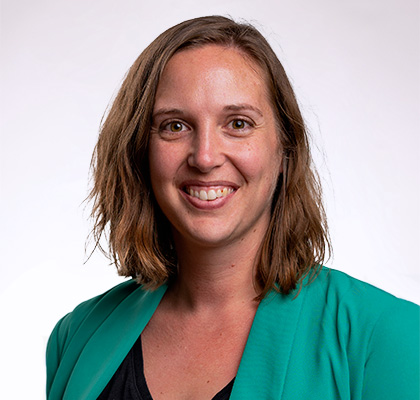
Blair Troudt
Assistant Professor
Office: 263 Centennial Science Hall
Phone: 715-425-4095
Email: blair.troudt@uwrf.edu
Professional Information
Education:
- Ph.D., University of Minnesota, 2022
- M. Ed., University of Missouri, St. Louis, 2016
- B.S., Pacific Lutheran University, 2014
Courses Taught:
- CHEM 111
- CHEM 116
- CHEM 115
- CHEM 250
Research Interests:
My research focuses on the development of protocols for studying and measuring perfluorinated ions using electrochemical sensors. We are currently studying the transfer of perfluorinated ions from an aqueous phase to an organic phase using electrochemistry. From this we can estimate these molecules ability to bioaccumulate. I am also studying the use of pencil “lead” as a suitable electrode for these studies. I am also interested in developing laboratory experiences for students in analytical chemistry that allow them the opportunity to complete independent research projects. I hope to introduce students to a diverse range of instrumentation and procedures used in analytical chemistry to measure and detect a wide range of analytes.
Publications:
- Anderson, E. L., Troudt, B. K., Buhlmann, P. Critical Comparison of Reference Electrodes with Salt Bridges Contained in Nanoporous Glass with 5, 20, 50, and 100 nm Diameter Pores. Analytical Sciences, 2020, 36(2), 187-191.
(This article was chosen as the cover article for the February 2020 issue of Analytical Sciences.) - Anderson, E. L.*, Troudt, B. K.*, Buhlmann, P. Easy to Make Capillary-Based Reference Electrodes with Controlled, Pressure, Driven Electrolyte Flow. ACS Sensors, 2021 6(6), 2211-2217. (*denotes co-first authors)
- Troudt, B. K., Buhlmann, P., Koester, S. J., Zhen, X. Chemical Sensors: Aldehyde Receptor Modification of Graphene. U.S. Provisional Patent Application 63/161,640.
- Troudt, B. K., Rousseau, C. R., Dong, X., Anderson, E. L., Buhlmann, P. Recent Progress in the Development of Improved Reference Electrodes for Electrochemical Experiments. Analytical Sciences, 2022, 38, 71-83.
- Troudt, B. K., Vue, J. W., Buhlmann, P. Comparison of the Kinetics of Aldehyde Sensing by Covalent Bond Formation with Hydrazines and Hydroxylamines. Tetrahedron, 2022, 119, 132852.
- Herrero, E. J., Troudt, B. K., Buhlmann P. The Effect of Paper on the Detection Limit of Paper-based Potentiometric Chloride Sensors. Analytical Chemistry, 2022, 94(43), 14898-14905.
- Choi, K. R., Troudt, B. K., Buhlmann, P. Ion-Selective Electrodes with Sensing Membranes Covalently Attached to Both the Inert Polymer Substrate and Conductive Carbon Contact. Angewandte Chemie Int. Ed., 2023, 62.
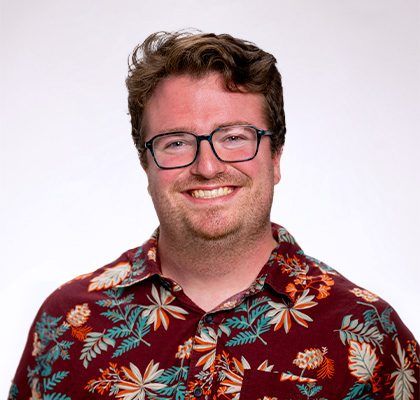
Zach Walbrun
Assistant Professor
Office: 225 Centennial Science Hall
Phone: 715-425-4515
Email: zachary.walbrun@uwrf.edu
Professional Information
Dual Academic Credit Program (DACP) Instructors
Emeriti Faculty
- Joe Conrad
- Marilyn Duerst
- Emerson Garver
- Michael Kahlow
- Michael Keenan
- Sheue Keenan
- Lisa Kroutil
- David Marchand
- Kevin McLaughlin
- Bruce Murray
- Barbara Nielsen
- Magdalena Pala
- David Rainville
- Jeffrey Rosenthal
- David Rusterholz
- Kathy Sumter
- Richard Swenson

